#christian crusades
Text

#christianity#jesus christ#christian crusades#me#this is so me#just girly posts#just girly thoughts#girly#girly blog
0 notes
Text
The Conquest of Jerusalem and Third Crusade Overview

The Crusades, which occurred from the 11th to 13th centuries, were a series of religiously inspired military campaigns that had a major impact on both the Medieval Europe and the Middle East. These wars were fought between Christians and Muslims over control of the Holy Land, specifically Jerusalem. This essay will provide an overview of the background and events of these wars, as well as consider their lasting effects.
The First Crusade was initiated by Pope Urban II in 1095 due to increasing threats to Christian pilgrims traveling to Jerusalem from Muslim forces in the region. The Pope called upon all Christian leaders in Europe to join him in a holy war against the Muslims who had taken control of Jerusalem and much of the Holy Land. This led to a mass mobilization of European armies (Edbury, 1996). Many noblemen saw this as an opportunity to gain glory and renown while others sought to fulfill religious obligations or gain riches (Edbury, 1996). As such, any political or economic grievances existing between leaders in Europe were temporarily suspended as they united for a common purpose (Edbury, 1996).
In 1099, with support from many local Christians already living in the area, European forces successfully took control of Jerusalem after weeks of siege warfare followed by a bloody battle for the city’s streets (Edbury, 1996). Hundreds of thousands were killed during this campaign including both Muslim defenders and non-combatants caught up in the fighting. This marked a momentous victory for European forces and greatly enhanced their reputation throughout Christendom (Edbury, 1996).
Despite this success however, further crusades failed to expel Muslim forces from Palestine with many ending in defeat or retreat back into Europe (Edbury, 1996). The Third Crusade proved particularly significant as it was initiated by European leaders seeking revenge after Saladin recaptured Jerusalem from Christian forces in 1187 (Edbury 1996). Despite various attempts at negotiation between Christian and Muslim powers there was still no clear victor at its conclusion. Ultimately then Saladin retained control over much if not all of Palestine while Christians maintained some presence but lost direct control over Jerusalem (Edbury 1995).
The effects of these wars have been felt until this day with religious divisions still very much alive across Europe and elsewhere. At times tensions run high between communities tied together through centuries old enmities that trace their origin back all those years ago. In addition to providing impetus for other later wars such as those during the Reformation period or Napoleonic era it is clear that The Crusades left an enduring legacy which has molded our world even today.
In conclusion then it is clear that The Crusades had profound consequences for Medieval Europe and its surrounding regions which are still felt today. It is also notable how interlinked these events remain with one another so many centuries later making them important historical events worthy of study even now.
Bibliography:
Edbury P W., The Conquest Of Jerusalem And The Third Crusade: Sources In Translation , Aldershot: Hampshire; 1996
1 note
·
View note
Text

Crusaders Sighting Jerusalem by Edwin Austin Abbey
#edwin austin abbey#art#crusaders#jerusalem#crusades#crusader#crusade#medieval#middle ages#mediaeval#knights#knight#chivalry#history#christianity#christian#christendom#religion#religious#swords#sword#europe#chain mail#armour#european#shield#flag#standard#helmet
553 notes
·
View notes
Text
I love getting my silly little dose of validation whenever I explain something as small to my childhood as "yea they taught us to be prepared to be soldiers in spiritual warfare between angels and demons from a young age" and having my therapist or a friend respond like

#my therapist thought I was making a crusades joke and looked genuinely distressed when I said No No. I mean literal spiritual warfare.#I've never seen a person go thru the 5 stages of grief faster than that man in that moment#by spiritual warfare I mean the demons and angels fighting around us at all times or whatever the fuck#the thing that causes people to say the devil is attacking them#but yea no that fueled my martyr complex but not nearly as much as other things#cause this one was at least hypothetical and invisible#'She Said Yes' and whatnot was much more real and much scarier#my paranoia was awful in middle and high school#But yea me and a friend of mine were both raised in separate cults so we were explaining our cults to a friend and it was a great time#it's fuckin wild out here#ex christian#religious trauma
239 notes
·
View notes
Text


Guidance of St.Gabriel that you cannot refuse
#crusader#knights of the holy sepulcher#illustration#christian mythology#angel oc#saint gabriel#archangel gabriel#medieval art
94 notes
·
View notes
Text
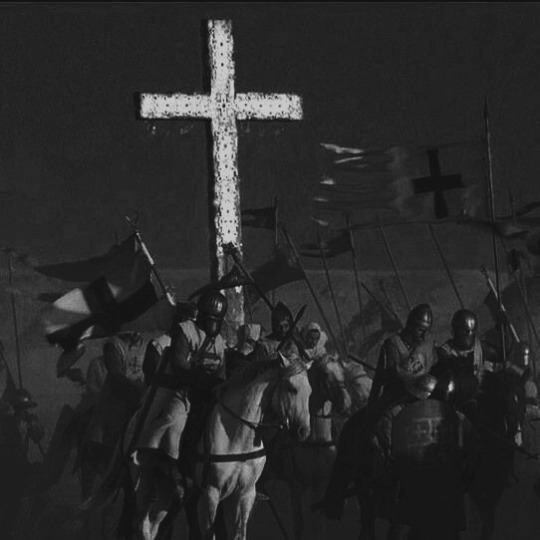


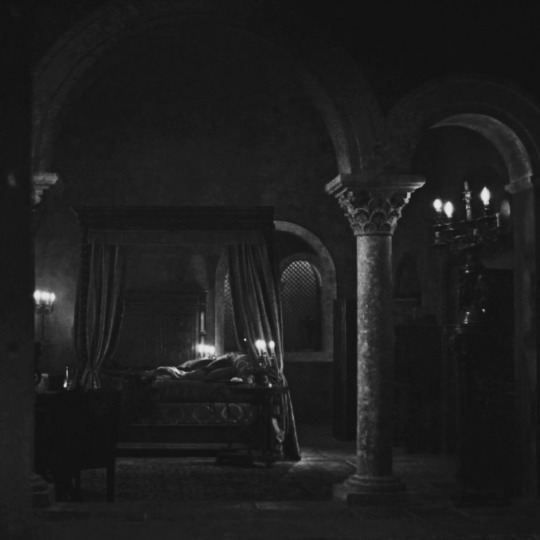

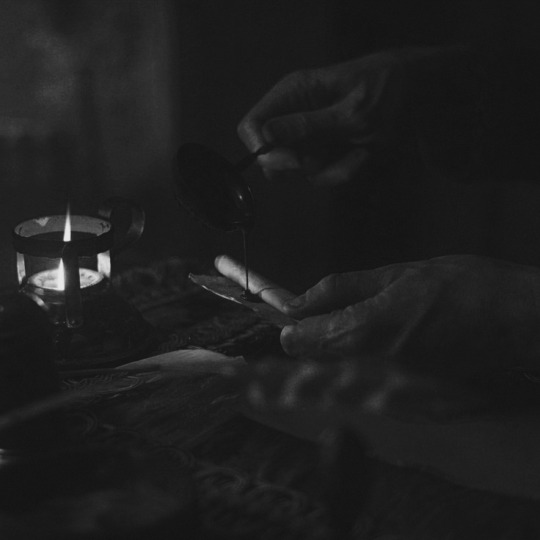



Baldwin of Jerusalem.
#baldwin iv#baldwin of jerusalem#kingdom of heaven#king#king aesthetic#christianity#crusader#history#christian#the leper king
95 notes
·
View notes
Text

#history#historical#jerusalem#crusader kings 3#crusader kings iii#crusades#knights#knight#knightcore#arms and armor#armour#varangian#knights templar#knights of the round table#kingdom of heaven#kingdom of jerusalem#middle east#levant#christianity#jesus christ#meme#human history#anthropology#cultures#history tag#history memes
77 notes
·
View notes
Text

Source
65 notes
·
View notes
Text
What is a Templar? (Or: The Knightly Orders of the Crusades)
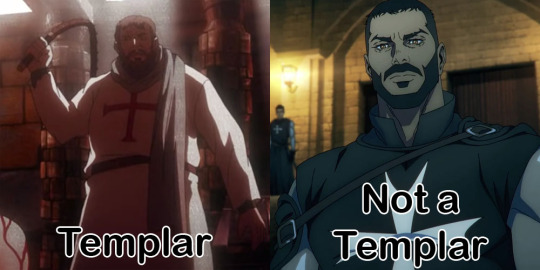
(Well, only kinda. But let me explain.)
Something that has surprised me ever since I have entered the Castlevania fandom is the fact, that people do not know what the heraldry of the Knights Templar is. People know they existed, but even with them showing up in a lot of English language media (especially treasure hunting adventure stuff), a lot of folks apparently do not know that in general a red cross on white ground means Knights Templar. Maybe this is to be expected, though, because in the end of course those adventuring media does not really go into the Templars outside of the mythology and conspiracy stuff that folks later on associated with them.
So, let me talk about the Knightly Orders of the Crusades.
First on, I talked about the crusades earlier today. But a quick rundown once more: Muslims were in control of Jerusalem. But while they happily allowed Christian pilgrims to visit the city, political reasons made folks in Europe try to take Jerusalem, which created a very, very chaotic first crusade.
One of the reasons why it was so chaotic, was that there were basically three kinds of folks participating: Pilgrims, just normal folks riled up, and knights. Now, it should be kept in mind: There were few people at the time who were educated in battle. Because most kings did not have a standing military. And because those people participating in the crusades being a bunch of chaotic folks who did not know what they were doing, things... went so chaotic.
So, in came the Knights Templar. So, let me explain the five Christian Knight Orders.

Okay, let me quickly explain the picture above.
We have the Sepulchers (founded in 1099). What we have here as the "Malte", are the Knights Hospitaller of the Order of St. John (founded in 1099). Then we have the Knights Templar (founded in 1119). Then the Order of Santiago (founded in 1170). And finally the Order of Teutonic Knights (founded in 1190).
It should be noted that there were some other Knight Orders associated with the Crusades, but those five are usually considered the most influencial.
But, okay, let me step back. Why were those orders founded?
Mostly to protect the crusades and the pilgrimages that followed. They provided a plethora of services to the pilgrims and crusaders, which might include fighting - but did not necessarily do so.
Let me start with the Knights Templar. Not because they were the first one or the most important one, but because they are just the ones most well known. People have all sorts of ideas, what they did. But mostly they acted as two things: Bodyguards and bankers. They arose from the monk Order of Christ. The idea was basically as following: Both those rampaging bands of crusaders and the pilgrims took a lot of risks to get to the Holy Land. Because this was the middle ages, and there were wars and bandits and all other things on the way. So, when you went to visit the Holy Land, you might actually not want to carry your valuables on you. Because they might get stolen (and you might get killed for them). So the Templars basically invented modern banking. You gave your money to the Templars where you started your journey, they gave you a ledger, on your way you could visit other Templar Monasteries and get your money from the ledger. Against a fee, of course. And if you died, the Templars kept the money. Which was part of the reason they became so rich. Now, did the Templars also pillage? Yes. Did they participate in crusading battles? Yes. But it was not their main goal. This was also the reason, why they had to get very creative when it came to making their money, after the main crusades had ended. It is also why they officially disbanded in the 14th century. Though I say officially for a reason, as the Knights Templar just merged back into with the Order of Christ, and it took a long while, until there was nobody around wearing the colors and heraldry of the Knights Templar. So, while technically disbanded, they did in fact participate in colonialism for a while. (And yes, this did include slavery. Both of white slaves from Eastern Europe, as well as later on non-white slaves from Arabia and Africa. Mostly because they had strong ties to Portugal, who were a leading force in early slavery.)
After this, let's go through the orders by years of founding.
The Knights of the Holy Sepulchre have a simple, yet complicated history. They are tied to the Church of the Holy Sepulchre in Jerusalem, where there was a monk order living. Now, in the early 11th century, there were religious conflicts within Jerusalem, that ended with the original church being destroyed. Just a bit later the Calif allowed it to be rebuild. But... then the crusades happened and religious fevor and when Jerusalem was taken, they decided they should defend some of their holy sides. As during the crusading battles some monks were knighted, they turned this... into a thing. These Knights first existed to defend the holy sides, then Jerusalem. They later participated in some of the battles. I should note, too, that a variation of them is still around today.
I talked about the Knights Hospitaller before, so I make this quick: They existed mainly to offer hospitality and medical services to crusaders and pilgrims. Like all of the knights they would, however, still participate in some battles.
Now, the Order of Santiago is a bit of an odd one out. Because they were not founded for the crusades but rather to fight the Muslims on a different front. As their name suggests: They tie back to Spain. And as I have talked about several times before, a good chunk of the Iberian peninsula at the time was in fact under Muslim rule. And yes, this order of church ordained knights originally fought the Muslims here. But they also quickly became drawn into the crusades. Other than protecting pilgrims, they also were ordained to provide any of the religious services pilgrims might need. (And yet, they were the odd one out between the Orders, because their vows were different. But about that in a bit.)
The Order of the Teutonic Knights was also a bit of a weird one. They started out as a religious fraternity, then did a bit of crusading, founded their knightly order in Jerusalem and then... preceded to Christianize the Balcans. As the name suggests, they were German in origin. And other than the other four orders, they actually had a big focus on fighting during the crusades (and later the "misionary work" in Eastern Europe).
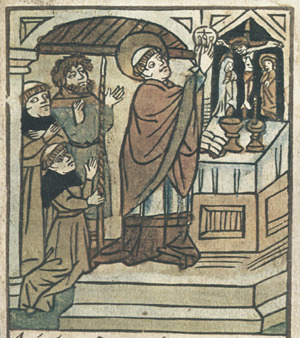
Something to understand about the Orders is, that they were not knights, who lived a monestary lifestyle, but rather monks, who were knighted. As such many of these knights would actually start out early as monks (again, back in those days teenagers and at times kids would already enter the monastery life for all sorts of different reasons), make their vows and then train in fighting to take up the mantle of the knight.
But as parts of those religious orders, they usually gave the three main monastic vows: A Vow of Poverty, a Vow of Chastity, and a Vow of Obedience. The one exception was the Order of Santiago, who did not give a vow of chastity and were in fact allowed to marry and have family.
And... I think that is it for now. This one turned out pretty darn long.
If you wanna know anything about the other knightly orders, just write a comment or let me know otherwise. I will... do a write down if there is any interest.
#castlevania#castlevania netflix#castlevania nocturne#castlevania mizrak#knights templar#knights hospitaller#crusades#knightly orders#christianity#medieval history
105 notes
·
View notes
Text
The Sultan, they said, was a good man. Soft, quickly moved to tears. Out of compassion, he bought the freedom of a Christian woman's stolen daughter. Even Walther von der Vogelweide, the minnesinger in distant Germany, praised the "mildness" of the powerful ruler in the Orient, whose name has a good reputation in the West: Saladin, a righteous man.
He was a man who always kept his word, even to his enemies.
He let his subjects drag him to court, because God's laws applied equally to everyone. Also for him, the ruler who managed to do what no one had ever managed before: to unite the Islamic world of the Middle East after centuries of discord and to wrest Jerusalem, the holy city of the Muslims, from the Christians in 1187.
His name translates as "righteousness of faith", and Saladin is indeed a devout Muslim. Nevertheless, after his conquest of the Holy Land, he allowed the Christians and Jews there to continue praying to their God. This is another reason why, more than half a millennium later, Western Enlightenment thinkers would make him the epitome of the tolerant ruler.
But this al-Malik an-Nasir Salah ad-Din Abu'l-Muzaffer Yusuf ibn Ayyub ibn Shadi, known as Saladin for short, also had other sides.
He could be treacherous, vile and mean. He did not shy away from murder. Nevertheless, this man fascinated his contemporaries. He became one of the most revered rulers of the Islamic world and the most important opponent of the Crusaders.
Saladin was born in 1138 in Tikrit (in present-day Iraq), the son of a Kurdish officer. During his political career, Saladin was the first to bring Egypt's army under his control.
Saladin, a Sunni, now founds two universities where theology is taught according to Sunni theology - a signal that he is on the side of the population. He also abolished a number of taxes that contradicted the Koran and the teachings of the Prophet.
Saladin's subsequent conquests shock the Christian world. By 1174, his power extended from North Africa to the southern tip of the Arabian Peninsula. In 1186, he ruled from the Nile to the Tigris.
At the height of his power, the Sultan even dreamed of taking the Holy War to Europe, conquering Rome - and putting the Pope in chains.
The Crusaders conquered Jerusalem in 1099 and held it until Saladin besieged it in 1187 and handed it over to the Ayyubid dynasty, a Muslim sultanate that ruled the Middle East at the beginning of the 12th century.
Saladin wanted to recapture the city, which had previously been ruled by Muslims.
For Muslims, Jerusalem is a place where important events in the life of Jesus and other important personalities took place. It is also the place where the Prophet Mohammed ascended to heaven according to the traditional interpretation of the Koran and other texts.
In Sunni Islam, Jerusalem is the third holiest city after Mecca and Medina. Muslims believe that Muhammad was brought to Jerusalem during his night journey (Isra and Mi'raj).
The name Jesus is mentioned twenty-five times in the Holy Qur'an, often in the form 'Isa ibn Maryam, which means "Jesus, son of Mary". In the Quran, he is given the unique title "Messiah" (al-masih in Arabic), which means "anointed one". He is considered one of many prophets from the lineage of the Prophet Ibrahim, or Abraham (peace be upon him). Many Muslim traditions regard it as an ideal example of spirituality. Unlike Christians, who generally believe in a triune God, Muslims believe that Jesus was a great prophet who was to lead mankind on the straight path of monotheism and obedience to God (Allah).
When Jerusalem also fell, two kings and an emperor set off for the Holy Land with their armies from 1189 onwards. One of the monarchs is King Richard I of England. Even before the armed pilgrimage, he had already earned himself an honourable name: "Lionheart."
Saladin lies in wait for the Christians in the forests of Arsuf near the Mediterranean coast. But King Richard of England had anticipated the attack; on 7 September 1191, his troops won a clear victory. Nevertheless, the Muslim army is still strong enough to block the road to Jerusalem.
Saladin's reconquest of Jerusalem in 1187 prompted Pope Gregory VIII to organize the Third Crusade. From 1189 to 1192, Saladin lost Acre and Jaffa and was defeated in the field at Arsūf. The Crusaders retreated to Europe without seizing Jerusalem, but Saladin's military reputation had been damaged. He died in 1193.
#learn about history#studyblr#religion#religious studies#crusaders#history#oriental#history of crusade#Saladin#king baldwin iv#kingdom of heaven#history of Jerusalem#Islam#christianity#history of Religion#teaching#books#booklr
50 notes
·
View notes
Text
Here's a five min drawing/sketch of the Baldwin IV (in French: Baudouin IV) aka the Leper King of Jerusalem ✨️
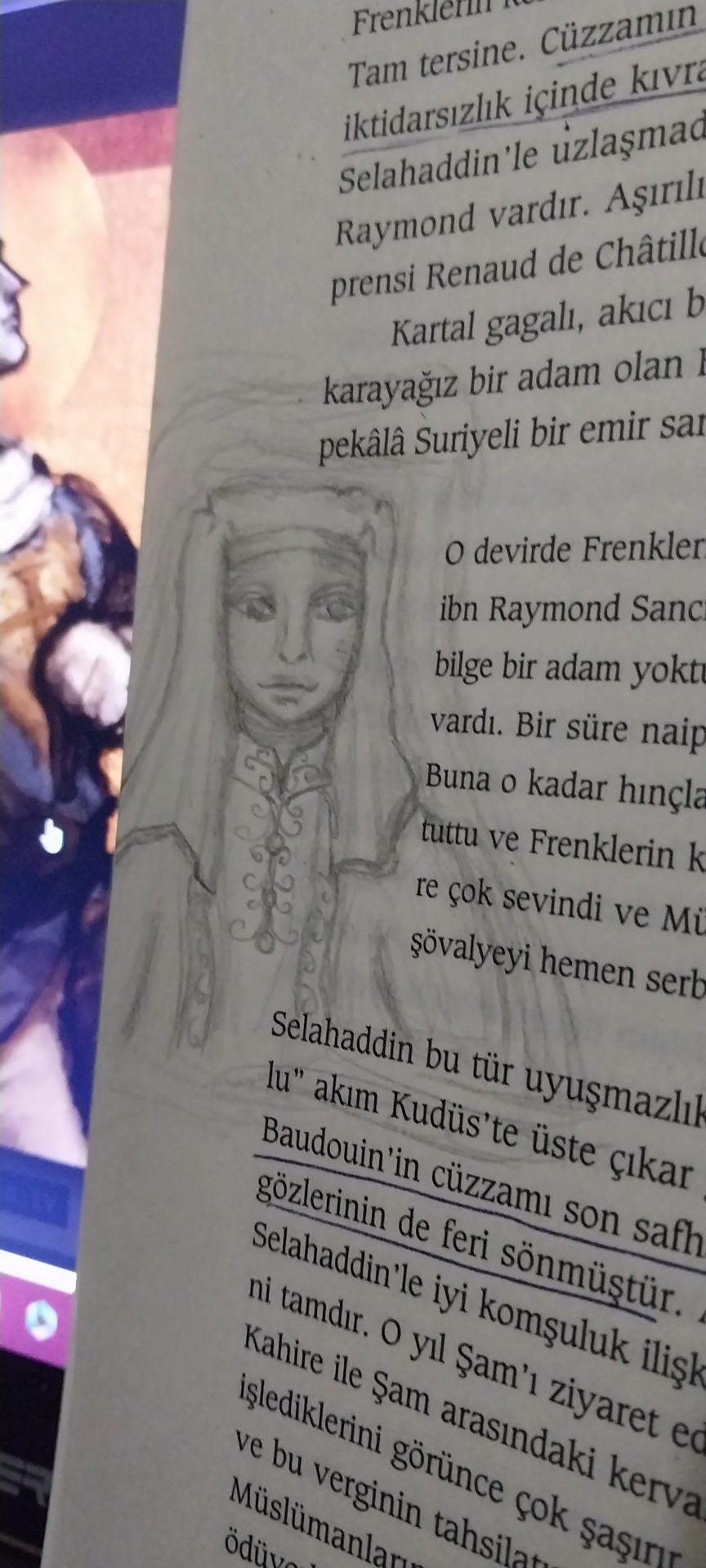


I had drawn it while I was reading the book "Les Croisades Vues Par les Arabes (Crusades from the eyes of Arabs) by Amin Maalouf. When I came to the part where the author mentioned about the Baldwin IV, I felt like I should draw him here as a quick sketch. I know it's not a masterpiece but here it is
Credit for the 1st pic (you can see behind my drawing) : @odlnus
#mood#artists on tumblr#art#tumblr#follow#artist support#illustration#king baldwin iv#baldwin iv#the leper king#leper king#jerusalem#kingdom of jerusalem#crusades#history#christian king#amin maalouf#sketches#quick drawing#kingdom of heaven#movie#Baldwin IV drawing#tumblr art#support artists#turkish
86 notes
·
View notes
Text

#ex christian#exchristian#exmo#exvangelical#exmormon#ex religious#i just got done reading some hot takes from anti-19th amendment fanboys#and let me tell ya its not pretty#these are gen x'ers and millenials picking up that mantle and crusading to destroy womens rights
455 notes
·
View notes
Text
Seeing a white person say unironically that PK and WL are colonizers is so fucking telling that they have zero idea of what racism actually is or the implications behind it, they're just parroting the most basic bullshit to look good. Like come the fuck on that take is racist as shit and its not because PK and WL are any less awful than colonizers. It's incorrect at best but genuinely an awful fucking take when parroted for clout bc you dont wanna be seen as problematic
(It's racist bc equating a genocidal god who you have to shred apart with extreme violence in order to have peace with the pain and anger of indigenous people is. Hm. Bad!!! Not to mention the fact that Radi has a very strong Christian angel motif going on and engages in a 'holy crusade' against everyone in Hallownest INCLUDING OTHER INDIGENOUS TRIBES NOT AFFILIATED WITH THE PALE KING like how the actual fuck can you look at her and go 'oh yeah she represents indigenous people because the moths have what look like dreamcatcher motifs with the essence motes' and unironically think you're not being racist. What the actual fuck)
((Double disclaimer: you can actually write a really interesting and nuanced altcanon narrative with this concept but the problem is that almost nobody ever does, they only ever flag it as 'problematic' because they want to look good, not bc they know the implications))
#im not saying who it is but god fucking damn. idiot.#hollow knight#anyways maintagging this bc i hate this so damn much#also no this is not bc i write a lot of pk or wl. i do not care to defend them. they're fun bc they're awful#and honestly if they were colonizers canonically id def. enjoy writing them getting their just desserts just as much#but the problem is specifically centered around looking at radi#a very CLEAR old testament example of divine wrath with christian ties and a fucking crusade to convert everyone#and go 'oh yeah shes the victim'#im telling you right fucking now as a mixed-race muslim that she is NOT#also to be clear i do like radi as well but she genuinely scares me#which is good! but she scares me because shes a genocidal force who demands you convert or die horribly#which as a guy who grew up in a middle eastern family post-911#is not that great!
74 notes
·
View notes
Text

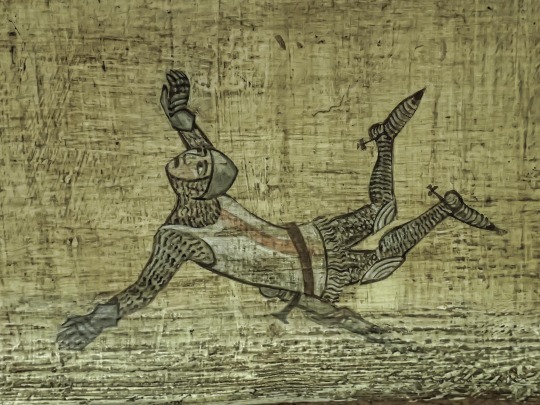

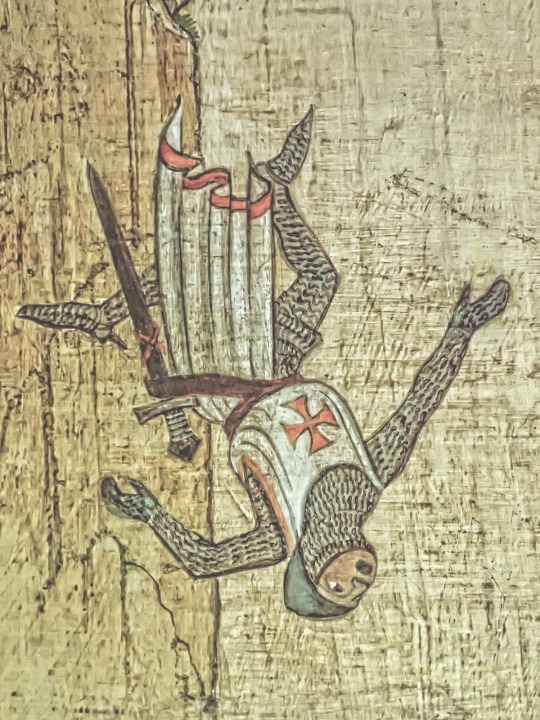
Knights attempting a Leap of Faith to reach the Holy Grail
— Indiana Jones and the Last Crusade (1989)
#knights#knight#holy grail#grail#graal#indiana jones#indiana jones and the last crusade#knights templar#medieval#middle ages#chivalry#art#crusades#crusaders#templars#templar#crusade#crusader#history#film#films#cinema#religion#arthurian#esoteric#christian#christianity#christendom#religious#chain mail
427 notes
·
View notes
Text

37 notes
·
View notes
Note
have u played pentiment? Also, that little tag on ur ex voto comic abt blocking supersessionists rly does mean a lot, thank u <3 <3 <3 <3 <3
I have! I haven't finished it yet, but I'm obsessed with Guy. I need to unpeel him like an orange
also no problem! it's literally the bare minimum for doing christian centric artwork, especially since I've previously done biblical illustrations but with a deliberate focus on the jewish narrative over christian interpretation in an attempt to chase the historical method.
usually I just block people and move on, but for comics like ex voto, which is heavily christian, I thought I'd ready a spray bottle in case anyone was thinking about acting up in the tags because I'd like for ex voto to be something fun from a spectacle point of view even if you aren't christian, but that can't happen if the supersessionism crowd feels too comfy because of the time period it takes place in
#i also singled out tradcaths because they're so annoying about this like oh my god fuck off#most of my friends growing up were jewish or muslim or non western christian so.#it would be a supremely dick move on my part if i was okay with having supersessionism hang around#when i get to the crusades i'll probably have to ready the spray bottle again because boy howdy is that a subject#that attracts some of the worst people you've ever had to deal with#ask tag
22 notes
·
View notes